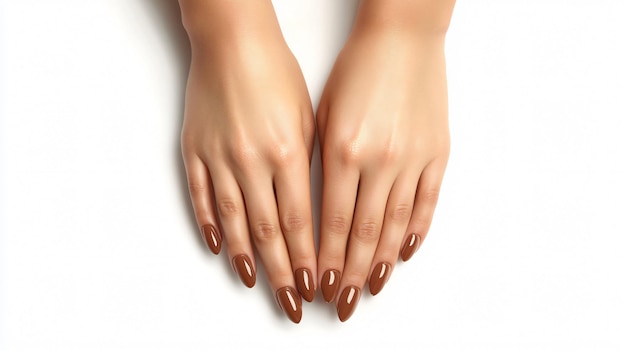The Risks of Hand Rejuvenation: An Overview
In the quest for a youthful appearance, hand rejuvenation has gained significant popularity. As people become more aware of how aging affects not just the face but also the hands, they increasingly seek treatments designed to restore a youthful look. However, understanding the risks of hand rejuvenation is crucial before embarking on any cosmetic procedure. This article provides an overview of the potential complications associated with these treatments, helping individuals make informed decisions.
Understanding Hand Rejuvenation Treatments
Hand Rejuvenation in Dubai encompasses a variety of cosmetic procedures aimed at improving the appearance of aging hands. Common treatments include dermal fillers, laser resurfacing, chemical peels, and microneedling. Each of these options targets specific issues, such as wrinkles, volume loss, and pigmentation changes. While many individuals see these procedures as a path to enhancing their aesthetic appeal, it's essential to acknowledge the risks involved.
Evaluating the Risks of Hand Rejuvenation
When considering hand rejuvenation, patients must be aware of various potential risks. Below are some key risk factors to keep in mind:
1. Allergic Reactions
One of the foremost risks associated with hand rejuvenation is the potential for allergic reactions. Many injectable fillers and other products contain substances that may trigger allergies in susceptible individuals. During the initial consultation, patients need to inform their healthcare provider about any known allergies. This information allows practitioners to choose the safest products and minimize the likelihood of adverse reactions.
2. Infection
Invasive procedures, especially those involving injections, carry a risk of infection. Despite strict sterilization protocols, infections can still occur at injection sites. Symptoms may include redness, swelling, warmth, and discharge. To mitigate this risk, patients must follow post-treatment care instructions meticulously, keeping the area clean and avoiding activities that could compromise healing.
3. Bruising and Swelling
Bruising and swelling are common side effects of hand rejuvenation treatments, particularly with injectable fillers. These reactions can vary widely among individuals and may last anywhere from several days to a week. While it is essential to understand that these effects are normal, patients should also be prepared for the fact that some may experience more pronounced bruising based on individual factors such as skin type and overall health.

4. Scarring
Certain hand rejuvenation techniques, especially those that penetrate deeper layers of skin, may pose a risk of scarring. Although advancements in technology have reduced this risk, it remains a concern for some patients. Individuals with a history of keloid formation or specific skin types should discuss their concerns about scarring with their practitioner to better understand their individual risk profile.
5. Asymmetry
Achieving symmetry is often a primary goal in aesthetic treatments, including hand rejuvenation. However, there is always a risk of developing asymmetrical results, particularly with injectable procedures. Asymmetry can lead to dissatisfaction and may necessitate additional corrective treatments. Selecting an experienced practitioner can significantly mitigate this risk, as skilled providers understand the nuances of aesthetics and can work to achieve balanced outcomes.
6. Neurological Complications
In rare cases, hand rejuvenation treatments can lead to neurological complications, such as nerve damage. This risk is especially relevant when injections are administered near sensitive nerve endings in the hands. Patients should be open with their provider about any medical history that may increase the likelihood of complications.
7. Overcorrection or Under-correction
Another significant risk in hand rejuvenation is the possibility of overcorrection or under-correction. This risk often occurs with injectable fillers, where too much product can lead to an unnatural appearance, while too little may not yield the desired results. Achieving the right balance requires skill and expertise from the practitioner, making it essential to choose someone with experience in hand rejuvenation.
The Importance of Informed Consent
A key aspect of minimizing risks in hand rejuvenation is the process of informed consent. Before undergoing any treatment, patients should engage in a thorough discussion with their healthcare provider about the procedure, including its risks and expected outcomes. This open dialogue helps ensure that individuals are well-informed and can make decisions that align with their expectations and comfort levels.
Selecting the Right Practitioner
Choosing a qualified practitioner is one of the most crucial steps in minimizing the risks associated with hand rejuvenation. Patients should seek professionals who are board-certified in dermatology or plastic surgery and have a solid reputation in performing hand rejuvenation treatments. Researching credentials, reading patient reviews, and examining before-and-after photos can provide valuable insights into a provider's expertise and reliability.
Preparing for the Procedure
Preparation plays a vital role in ensuring a successful hand rejuvenation experience. Before the procedure, patients should discuss their complete medical history, current medications, and any allergies with their provider. This thorough discussion allows the practitioner to tailor the treatment plan to the individual's specific needs, ultimately reducing potential risks and improving overall outcomes.
Post-Treatment Care
Proper post-treatment care is essential for minimizing complications and ensuring optimal recovery. Patients must adhere to all aftercare instructions provided by their practitioner, which may include avoiding sun exposure, keeping the treated area clean, and refraining from activities that could impede healing. By following these guidelines, patients can significantly improve their recovery outcomes and reduce the likelihood of complications.
Conclusion
While hand rejuvenation treatments can offer significant aesthetic improvements, understanding the associated risks is crucial for anyone considering these procedures. From allergic reactions and infections to asymmetry and neurological complications, being well-informed empowers patients to make decisions that align with their health and aesthetic goals. By selecting a qualified practitioner and adequately preparing for the procedure, individuals can navigate the risks effectively and achieve the best possible results. Ultimately, recognizing the risks of hand rejuvenation will lead to a more confident and satisfactory experience, allowing individuals to enjoy their rejuvenated hands with peace of mind.

